Eltrip-R20 on a motorcycle?
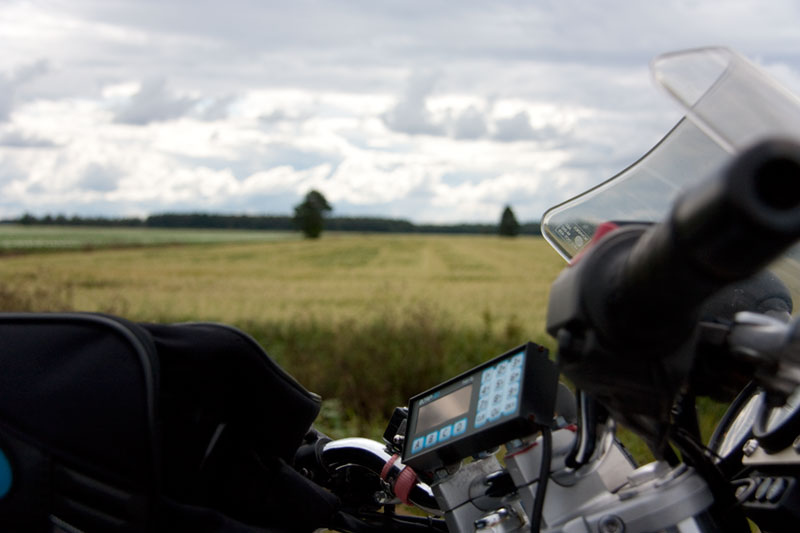
I've been asked a few times if the Eltrip-meters function on a motorcycle. The meters
are primarily designed to be used in a location that is protected from rain and environment
in general - that is, in a cabin of a car. Thus I've been forced to respond with
absolute maybe.
Not very convincing, I know, so why wouldn't I try for myself.
|
I didn't have to look very far for a suitable target bike, as there happened to
be a 2003-model Kawasaki ZR-7s in my own garage (shown on picture here, on August 2012)
somewhere around Tyrnävä, a smaller town near Oulu, Finland). I've owned this bike for some
five years now, so before taking the bike out at the spring (may 2012) I installed
completely off-the-self, unmodified Eltrip-R20 meter to it. Absolutely no improvements,
like waterproofing or gluing of meter was done; meter was exactly as taken from standard delivery packaking.
|
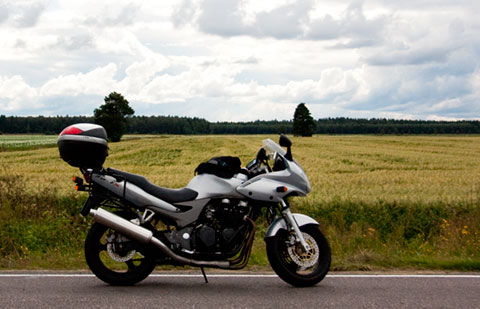
|
|
As the bike's own speed/distance meter was mechanical, an external magnet-detecting sensor
had to be installed. Since front tire had no readily suitable place for the sensor, I cut
a suitable piece from a handily available piece of sheet metal and used it to attach the
sensor between original sensor cable and brake system. I glued two magnets on the
brake disc holder with normal general utility glue; other of these can be seen on
picture. Magnets were still attached at the end of summer so at least for this kind
of driving the glue was sufficient. Real racing might require better attachment.
|
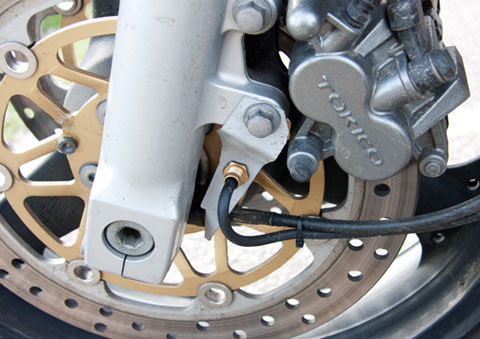
|
Meter itself was attached directly above the handlebar. I could have put the Eltrip
above the bike's own meter, under the windshield where it would have been better
protected, but since this was to test the meter in outside conditions, I chose to
install it on more exposed location.
The location above the handlebar is fairly far down from normal line of sight, so
looking at the meter during driving requires taking eyes off the road for too long
a time. Under the windshield would've been better for this too.
The actual installation was done with a few more pieces of metal attached under
the bolts that hold the handlebar. Meter was also attached to these pieces of metal
with screws. Attachment was sturdier than usual, but at least now random passing thief
won't just grab the meter that easily. Again, on a location where there are more
criminals around one might consider using velcro for meter so it can easily be
taken with you when leaving the bike.
Meter power was taken after the ignition lock, so when bike wasn't driven the meter
was unpowered. Bike was outside for entire (very rainy) summer, so meter was
subjected to a lot of rain. The picture here was taken on june 2012, and some
rust can be seen at the end screws of the meter.
On the left a PWM-based handlebar heating control unit I installed five years ago
can be seen. The attachment for it is kinda MacGyvered together, and now I would
do it differently. The electronics in heater control unit hasn't been protected
either, and it's still functioning perfectly.
Meter worked reliably for entire summer. Although there was a lot of rain, it never
affected meter functionality at all. Since the meter was not constantly powered,
the internal clock stops after a week or so, but that can be re-set easily enough.
Usage-wise even thin driving gloves make using of meter more difficult when driving.
However, using the meter when actually moving is dangerous, so meter shouldn't
be used then anyway; stop, then do whatever adjustments are needed before continuing driving.
|
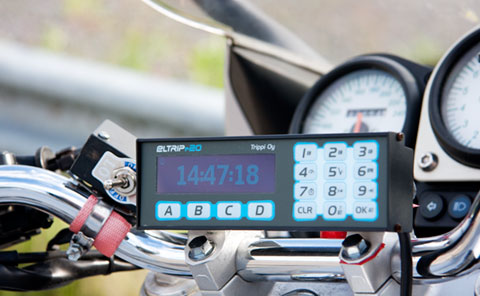
|
I moved the bike back inside garage at the end of october. There still was no
functional problems with the meter, and slight rust-coloring of the screws has
not grown. I removed the meter from the bike and even examined the electronics
under the microscope, but no problems or water-damage could be seen although
there absolutely have been water inside the meter on this summer. In the end,
the slight rust-coloring of the screws was actually only sign that meter had
been in moist environment.
And conclusions?
No large conclusions really can be drawn from this one simple test. Of course I can now,
if asked, say that a meter has been on my bike for a summer and survived without a scratch.
When installing a meter for an actual race it most likely would be located in a more
protected place under the windshield and it might also be installed so that it can be
taken off when not used, so it might not be that exposed to environment after all.
One might consider adding some hot-melt glue on the most exposed regions (seams at upper
part of housing and display) to protect the meter further. Lower part of the meter should
be left unsealed, as it's good to have a place where water can drain out from the meter.
I will install this very same meter on the bike next summer, this time constantly powered,
even in pouring rain. No sealing mentioned above will be done, the meter still will be
like taken directly from the shelf. In a year I'll report more.
Note that although Eltrip did tolerate this test, this absolutely can not be generalized to all electronics!
Eltrips have been designed to take some abuse in automotive use, so before starting this
project I had pretty good expectation for this. Under no circumstances I recommend anyone
to test this with their own devices unless they have been specifically designed for this
kind of use. If you still decide to try, you will be doing this with your own responsibility.
10.5.2013: New summer, new driving season: Meter is back on the bike,
but unfortunately still only powered when bike is running. Small but continuous current
drain was apparently too much for aging battery. Bummer.
|
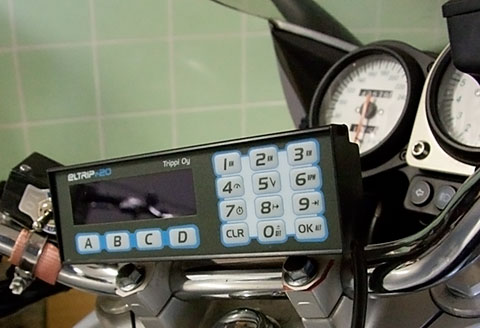

|
 -- Toni
Back to Eltrip-R20 page
-- Toni
Back to Eltrip-R20 page

 -- Toni
-- Toni





